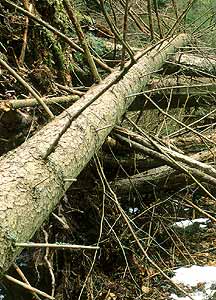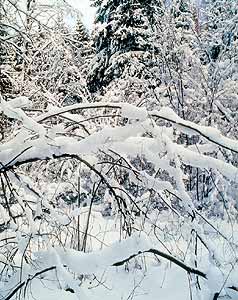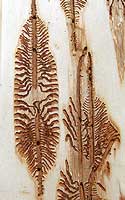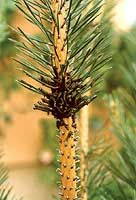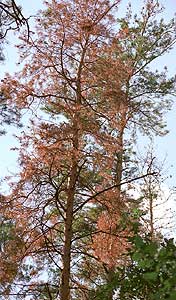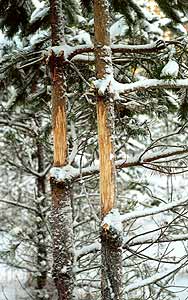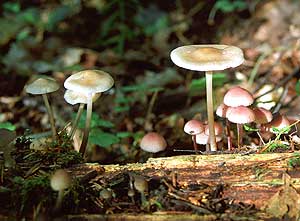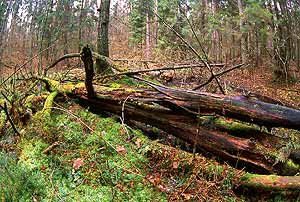|
FORESTS
|
||||||||||||||
Text
|
The threats faced by forests
In a national park, the natural forces of nature are the main factors affecting the forests. The anomalies in the course of atmospheric phenomena are of paramount importance.
Storm winds and hurricanes break tree tops, branches and trunks or overturn whole trees by uprooting them. Strong winds are capable of breaking or overturning all trees over large areas.
Snow is most dangerous when it occurs in a pile on branches. The snow piles form during windless weather and above-zero temperatures when snow falls as big flakes and overburden the crowns of trees. The results include the destruction of tree tops and branches, bending of smaller trees, destroying some roots and finally snapping trunks or uprooting and overturning whole trees.
Long-lasting droughts result in a lowering of the ground water table. Tree roots dry up and are not capable of resuming their functions after the humidity rises again. Trees suffer water shortage which affects their overall condition and health status.
Rapidly dropping temperatures may also contribute to the weakening or even outright killing of trees. The late (spring) frosts destroy the foliage of some tree species. When above-zero temperatures persist during the winter rest, the trees (especially young seedlings) are attacked by pathogenic fungi. Severe freezing temperatures only rarely damage trees but can nevertheless be harmful when coming after a long period of warmer weather.
A factor which enhances the adverse effect of atmospheric phenomena on the forests in the Park is the distortion of their composition, in the process of their commercial exploitation over almost three centuries. Excessively homogenous in terms of composition age and spatial pattern, the forest stands yield easily to winds and snow storms, and submit to the diseases following these phenomena.
Trees, weakened or killed by climatic anomalies are targets for attacks by other organisms, mainly some insect species or fungi. Particularly vulnerable to the various pathogenic factors are homogenous spruce and pine stands. Trees which grow on unsuitable soils and often too densely are weaker and diseases spread rapidly from such individuals to other trees of the same species growing nearby.
The most endangered trees are spruces due to eight-dentated bark beetle (Ips typographus) which feeds on them. In 1993-1996, these beetles feeding beneath the spruce bark attacked a great number of trees, mostly old ones. The forest stands were thinned and many gaps in the forest canopy appeared.
Another effect of the long years of economic activities of Man is a shortage of wood undergoing decomposition. In its long life, a tree performs only some of the functions in the forest community, but it has no less an important role to play after its death. The rotting wood of a dead tree provides other plants and animals with suitable habitats to live, within, on the surface as well as around its dead body. A naturally growing forest cannot live without dead trees.
A decomposing dead tree contains twice as many living things than could be counted throughout its entire life. To phrase this in a jocular way: a dead tree is ”twice as alive” as it was when actually still alive.
In any forest all its components should be protected, both plants and animals. With the extermination of wolves, lynxes, wild cats and bears, there were no longer animals around which regulated the number of large forest herbivores in a natural way.
Because of the fragmentation of forests and proximity of human settlements, these species of predators are not likely to ever return to their former habitats in the numbers which would enable them to again exercise the natural control over the numbers of red deer, roe deer, elks and wild boars. Over recent decades the population numbers of deer have increased significantly. Faced by insufficient food supply in the herb layer they have made up their food by eating young twigs and stripping fresh bark from the trees. With excessive numbers of large herbivores, nursing young seedlings, particularly of deciduous tree species, becomes almost impossible. This undermines the entire task of returning forests to their natural state. Man has to take up the role of natural regulator of population numbers of certain animal species.
|
|||||||||||||
|
|
|
